Building materials are what determine the survival of an establishment during the case of fire. Therefore, it is important to understand building constructions. Buildings are divided into several types depending on the materials used to make it and their structure. There are basically 5 types of construction:
-
Type 1: Fire Resistive: More than 75 feet tall, these establishments are high-rises. Their walls, partitions, columns, floors and roofs are non-combustible. They are designed to limit and prevent the fire from spreading. These are constructed of concrete and protected steel.
-
Type 2: Non-Combustible: Although, the walls, partitions, columns, floors and roofs are noncombustible, they provide less fire resistance. Their walls are usually reinforced masonry or tilt slab, while roofs have metal structural members and decking. The top of these roofs are often covered with lightweight concrete, foam, an insulated membrane or a combination of these materials. Because most of these buildings are newer builds, they’re usually up to code and include fire suppression systems. And because metal roofs may fail with heat—not just from direct fire—expect early collapse, especially in some of the bigger buildings that have a substantial fire load. In cases of fire, they run a high risk of collapsing.

-
Type 3: Ordinary: These buildings can be either old or new. They have non-combustible walls and a roof made of wood. The newer type 3 buildings will have lightweight roof systems supported by reinforced masonry or tilt slab. The most common types of roof systems in a commercial setting of Type 3 construction include parallel cord truss and panelized roof systems.
-
Type 4: Heavy Timber: These are mainly old buildings. They hold well under fire. The construction has walls of masonry or other noncombustible material. The interior columns, beams and girders are made of heavy timber. Floors and roofs are made up of heavy planks. It is resistant to ignition but, once it catches fire it is difficult to put it out. It also runs a high risk of collapsing just because of its structural mass.
-
Type 5: Wood Framed: These are found in modern homes. The walls and roofs are made of combustible materials—most commonly wood. If the walls are wood-framed, the roof usually is as well. Rooftops are ceramic tile or asphalt shingles placed over lightweight trusses and OSB. Both UL and NIST studies have found that lightweight construction will fail within minutes of direct fire impingement.
\
It is important that one knows the building type that they reside in because of safety reasons. Only when one is aware of their building type will they be able to determine just how much risk they live under. Knowing the building type also lets one understand about the risks they are under. This will help them to act accordingly and be safe.
